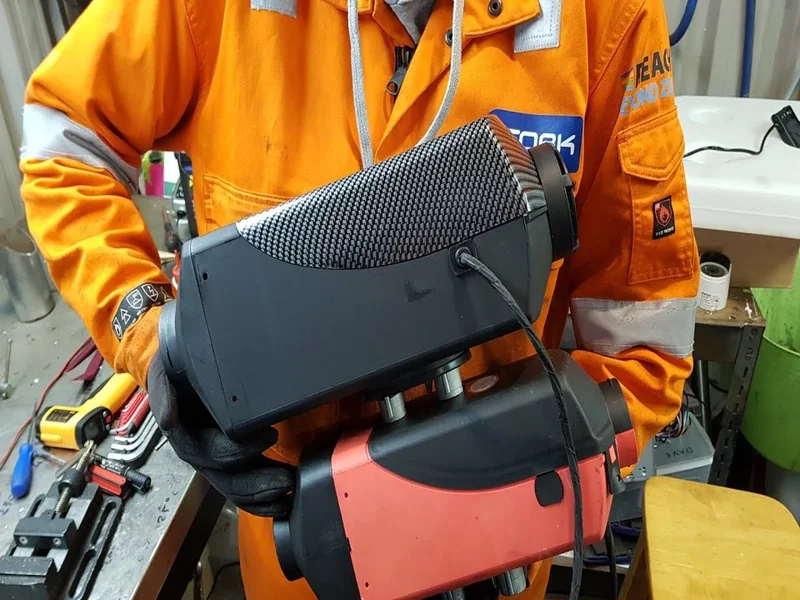The air temperature in a vehicle or a marine vessel keeps changing according to the prevailing weather conditions. On a cold day, the air temperature drops may make your ride uncomfortable. Thanks to the Chinese diesel heater controller, your ride or cruise is more comfortable.
A Chinese diesel heater controller is a device that moderates the temperatures of the interior of a vehicle or a ship. It works under a simple mechanism of warming and igniting air in a locomotive to keep the interior warm. The air is first mixed within fuel in the vessel before ignition. In addition, the device also regulates ventilation to make your ride or cruising experience comfortable.
The principle of operation of a Chinese diesel heater controller may look pretty straightforward but needs a grasp of the steps to follow when setting it up. Here are some of the basic things to know before you install a Chinese diesel heater controller in your car, truck, bus, or marine vessel.
What Are the Main Models of Chinese Diesel Heater Controllers?
Chinese heater controller comes in three main models. The models are classified according to the amount of power they consume while operating.
2 KW Diesel Heater Controller
This model works at 12V power. It warms the interior of your vessel fast because it operates on low power. Its fuel consumption is low, and therefore it is ideal for long-distance drives. The 12 KW diesel heaters are ideal for cars, trucks, and buses.
5KW Diesel Heater Controller
This model works on a 12V or 24V power supply. Its fuel consumption is moderate and produces more heat than the 2KW heater controller. You can control the temperature through the device’s heat preset facility, and it utilizes fuel from the vehicle’s tank. It is ideal for all types of vehicles.
8KW Diesel Heater Controller
The 8KW DHC works under a voltage of 12. It comes with an oil pump and produces a lot of heat. It is fitted with an LCD switch silencer to minimize noise and is ideal for trailers, trucks, and marine boats.
Chinese Diesel Heater Controller Installation
Whichever heater model you choose, the installation mode is nearly the same. Here are the six steps to follow when installing your heater.
Mounting
This refers to fixing the heater in a preferred location within a vessel. It is advisable to place your heater in a central position to enable even heat distribution.
Fix the Air Inlet and Outlet Pipes
The pipe through which the air gets into the heater should be placed where there is plenty of air. The outlet pipe supplies the whole sitting area with heat and should be correctly installed.
Connection and wiring
You need to connect this device to three different areas to work efficiently. The first connection goes to the power supply. Most heaters are powered by a 12V or 24V power supply system.
The second connection is to the fuel tanker. A 2KW heater controller utilizes fuel from the vehicle’s tank, but the other models come with a separate fuel tank. You should place a fuel tank with minimum distraction to avoid spillage, like under a seat.
The third connection is to the exhaust pipe. Combustion of fuel to warm air and generate heat is sometimes incomplete. The exhaust gases produced include carbon dioxide and carbon monoxide. To avoid suffocation, the exhaust gases should be channeled out via the exhaust pipe.
Attach the Fuel Filter
A fuel filter keeps fuel from the tank to the heater free of impurities. Using impure fuel may lead to harmful emissions from the heater and cause the device to malfunction.
Set Up a Combustion Intake
A combustion intake traps air and supplies it to the heater for combustion. It should be placed at a point away from the exhaust pipe and where there is less solid debris which may lead to blockage.
Install the fuel pump
The fuel pump pushes fuel to the diesel heater. It should be placed near the heater—the lines routing fuel from the tank to the pump slope upwards to regulate fuel flow.
CDHC Setting and Error Codes
After installation, you should set your CDHC to the required time and heat control. Here are three simple steps.
- Step 1– Turn on the device by pressing the power button.
- Step 2– Set the time range within which the device should generate heat. Suppose it is 7.00 am, and you want your CDHC to warm your car for 20 minutes. You should set your timer as 7.00- 7.20 by tapping the settings button and adjusting the time using the dropping or up button.
- Step 3– Set the temperature range by tapping the rising and dropping button. To lower the temperature limit, press the dropping button to the desired value and tap okay. You can set an upper limit using the rising button followed by okay.
- All settings start with the setting button and end with the ok button.
Error codes are numerical values that pop on the screen of a CDHC when it is faulty. Different codes indicate different malfunctions.
A Table of Common Error Codes, the Fault Indicated, and Recommended Solutions
| Error code | Fault | Recommended solution |
| 01 | Heat exchanger overheated | Inspect and replace the intake and outlet unit, fan, or heat exchanger |
| 02 | The intake temperature sensor overheated | Clear inlet and outlet or restart the heater |
| 04 or 06 | The temperature sensor is faulty | Replace the temperature sensor |
| 05 | The flame indicator is faulty | Correct the wiring and replace the unit |
| 08 or 29 | Flame failure due to insufficient fuel | Check the fuel tank and pump and increase the fuel supply. |
| 09 | Faulty glow plug | Check the control unit or replace the glow plug. |
| 10 | Insufficient speed in the electric motor | Replace electric motor or air blower |
| 13 | Faulty battery | Check and correct wiring and battery terminals |
Final Thoughts
A Chinese diesel heater exchanger is an essential device in vehicles and marine vessels, mainly in any type of boat. It is essential to study and understand the operation manuals before installing to avoid hazards and malfunction of the device.







